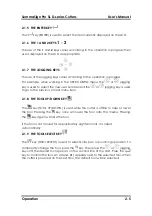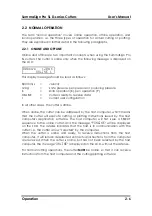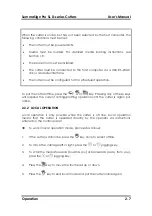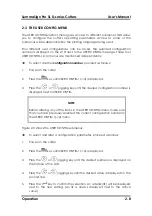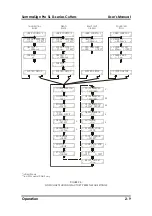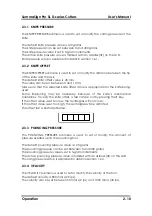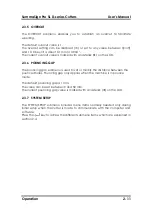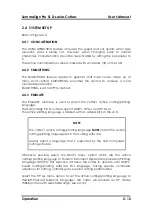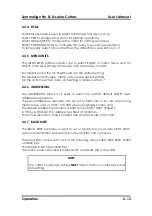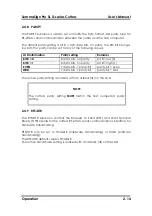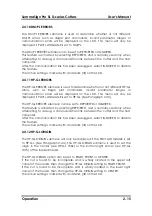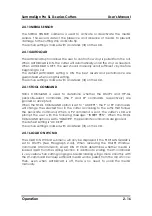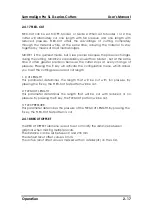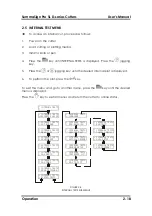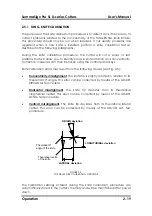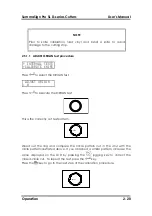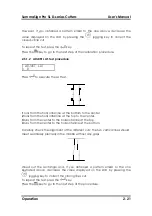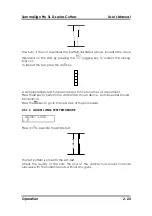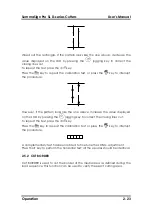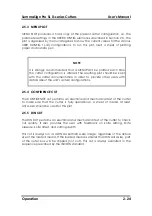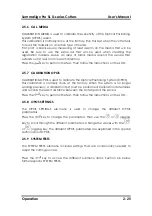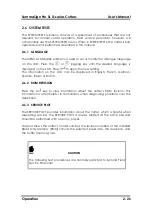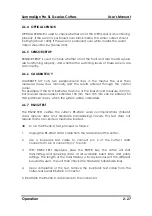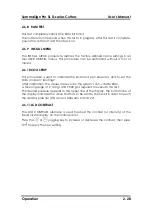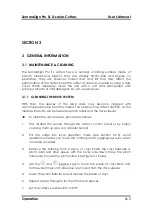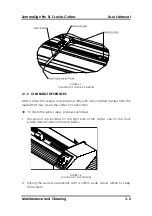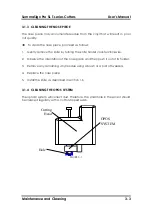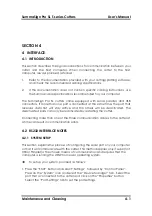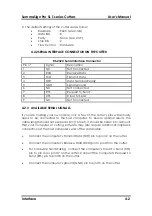
SummaSign Pro SL D-series Cutters
User’s Manual
Operation
2-19
2.5.1
TANG. KNIFE CALIBRATION
The purpose of the knife calibration procedure is to detect and, if necessary, to
correct problems related to the concentricity of the TANGENTIAL knife blade.
This procedure should only be run when required. If cut quality problems are
apparent when a new knife is installed, perform a knife calibration test as
described in the following paragraphs.
During the knife calibration procedure, the cutter will cut a series of test
patterns that will allow you to identify errors in knife rotation and concentricity.
Corrective measures can then be taken using the control panel keys.
Knife calibration errors may result from the following causes (see Fig. 2-5):
•
Concentricity misalignment
. The knife tip is slightly rotated in relation to its
theoretical 0
°
angle. This error can be corrected by means of the ADJUST
ORIGIN test procedure.
•
Horizontal misalignment
. The knife tip deviates from its theoretical
longitudinal center. This error can be corrected by means of the ADJUST
LONG. test procedure.
•
Vertical misalignment
. The knife tip deviates from its theoretical lateral
center. This error can be corrected by means of the ADJUST LAT. test
procedure.
LONGITUDINAL deviation
LATERAL deviation
Theoretical centre
of the knife
Theoretical 0º
angle of the knife
ORIGIN deviation
FIGURE 2-5:
POSSIBLE KNIFE CALIBRATION GROUNDS
The calibration settings entered during the knife calibration procedure are
automatically stored in the cutter’s memory and will be maintained after power
down.

